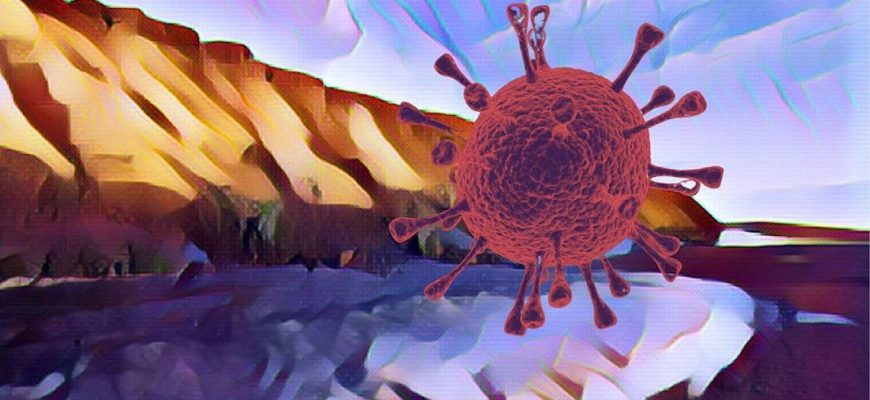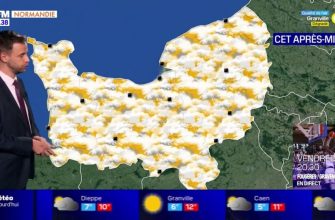Author: Anton Merzlyakov. Photo: Title – Canva
Don’t hit the piggy bank!
Pay for purchases in installments without a down payment with Minipay
News regularly appears on the network with headlines like “An ancient virus that has been dormant for centuries threatens all of humanity.” As a rule, such notes often mislead readers – in other words, they “yellow”. But sometimes we are talking about really potentially dangerous microorganisms, the methods of combating which have not been fully explored. The story below is about viruses that have spent about 50 thousand years in the Siberian permafrost. However, they were “thawed” on purpose. Who needs it and why?
“Not above 0°C”
Permafrost (permafrost is a more hyped definition) is cryolithozones characterized by the absence of periodic thawing. Simply put, we are talking about the upper part of the earth’s crust, the temperature of which for more than two years (and up to hundreds of thousands) does not rise above 0 ° C. The depth of permafrost can exceed 500 meters, and in the mountains it can reach an impressive 1.5 kilometers.
The total area of permafrost on the planet is 35 million square kilometers. It’s a lot? Yes. The described territories, with the exception of Australia, are found on all continents. We can say that they occupy up to a quarter of the entire land area and are found even in Africa (though only in high mountainous regions).
In neighboring Russia, permafrost zones are mainly located in Transbaikalia and Siberia – it was there that French, Russian and German scientists “unearthed” (in fact, recreated) almost a dozen viruses, whose age varies from 27 to 48.5 thousand years. This makes them one of the most ancient viruses (and possibly the oldest) known to date.
The peculiarity of the study also lies in the fact that it has gone through several stages of peer review. The preprint appeared on the bioRxiv service in November last year, and last February an article with comments from experts was published in the journal Viruses.
“Zombie viruses” that have retained the ability to replicate?
The term from the subtitle is operated by the scientists themselves – this is not a media exaggeration. The abstract part of the study (essentially a generalization) says: “There have been no reports of ‘live’ viruses since the two original studies in 2014 and 2015. This erroneously assumes that such cases are rare and that “zombie viruses” do not pose a threat to health systems. To bring the assessment closer to reality, we report on the preliminary characteristics of 13 new viruses isolated from seven different samples from the ancient Siberian permafrost.”
Simply put, according to some estimates, in the 21st century, the average temperature on the planet may become higher by about 1.5 ° C. Doesn’t seem like much, does it? If researchers are to be believed, this is more than enough to start melting permafrost (especially in the Arctic) twice as fast as in temperate climates. That is, a scenario cannot be ruled out in which bacteria and viruses that were in a frozen state for up to a million years (the estimated age of the permafrost) will be released and pose a potential threat to us.
How exactly? Experiments conducted nine years ago confirmed that such pathogens can be resistant to antibiotics and other treatments currently available to us. With this in mind, the scientists decided to test whether “paleopathogens retained the ability to replicate and infect eukaryotic organisms.” These include people: eukaryotes are organisms whose cells contain a nucleus.
How viruses were resurrected
The work was led by French researcher Jean-Michel Clavry, professor emeritus of medicine and genomics at the Medical School of Aix-Marseille University (France). The mentioned experiments conducted in 2014-2015 also took place with his participation – the group has experience in this area.
In total, scientists analyzed seven samples taken in several regions of the Siberian permafrost (including the remains of mammoths and wolves from the same period), as well as those found in Kamchatka and on one of the banks of the river in Yakutia. Supernatants (supernatant) were artificially introduced into Acanthamoeba castellanii amoebae in Petri dishes, and after 72 hours, changes characteristic of viral infections were observed in them: nucleus deformation, rounding, lack of adhesion, i.e., the ability of cells to communicate with “neighbors”.
The samples were subjected to transmission electron microscopy and polymerase chain reaction followed by purification, cloning, viral DNA extraction and sequencing. Sounds too complicated? As a result, biologists managed to isolate 13 viruses, the genome of which differs significantly from known modern analogues. In this case, all viruses belong to large varieties. According to Clavry, this is done on purpose so that the samples can be seen under a conventional light microscope, making them easier to study.
“The ability to infect retained”
So, is it worth sounding the alarm now? Not really. “The viruses that we revived are not dangerous at the moment, because they only infect amoebas,” scientists mentioned. Nevertheless, the main author of the work, Jean-Michel Clavry, in a recent interview added: “We view the amoeba-infecting viruses as surrogates for other possible viruses that lurk in the permafrost. We constantly notice traces from a whole host of other viruses. But we still don’t know for sure whether they are alive or not.”
In other words, the study confirmed the ability of large ancient DNA viruses to retain the ability to infect microorganism cells. This, in turn, caused the replication of the virus genome (the creation of daughter molecules) and, as a result, the formation of particles that infect other microorganisms.
“If the amoeba viruses are still alive, there is no reason to believe that other varieties will be permanently dead and will not be able to infect their carriers,” the researcher concluded. In addition, traces of other species, including those associated with human pathogens, were found in Petri dishes. Among them are poxviruses (variola viruses) and herpesviruses. For obvious reasons, they did not check whether they still had the opportunity to distribute. To face such a problem, even theoretically, would be too dangerous.
What actions can be taken today
CNN interviewed other industry experts and asked them to comment on Clavry and his team’s research. Representatives of NASA (they were interviewed in terms of assessing the rate of global warming) noted that identifying the dangers contained in the warming permafrost is only the first step towards understanding the risk they pose to the Arctic and the planet as a whole.
“It is necessary to quantify where, when, how quickly and to what depth the permafrost will thaw,” – the words of scientists are given in the article. In addition, thawing permafrost releases methane and carbon dioxide into our atmosphere. It also affects climate change, and not in a good way.
Important: most of the thirteen sequenced viruses are not yet registered in the International Committee on Taxonomy of Viruses (ICTV) database. But a few years ago, researchers created a catalog of potential hazards thought to lie dormant in the permafrost. Among them are not only ancient viruses and microorganisms, but also buried waste from the extraction of toxic chemicals, metals and radioactive materials.
At the end of the CNN material, it says: at the moment, the scenario of infecting people with pathogens that have not seen the light of day for tens of thousands of years looks “unlikely”. But preventing their accelerated “thaw” is a priority task of containing a potential threat.
Our channel in Telegram. Join now!
Is there anything to tell? Write to our telegram bot. It’s anonymous and fast
Reprinting text and photos of Onlíner is prohibited without the permission of the editors. ng@onliner.by





